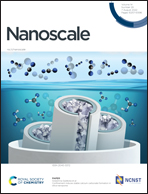Insights into the enhanced electrochemical performance of MnV2O6 nanoflakes as an anode material for advanced lithium storage†
Abstract
Binary transition metal oxides (BTMOs) are regarded as potential anode materials for lithium–ion batteries (LIBs) owing to their low cost, high specific capacities, and environmental friendliness. In this work, MnV2O6 nanoflakes are successfully synthesized by a facile hydrothermal method. When evaluated as an anode material for LIBs, benefiting from the activation process, the as-prepared MnV2O6 nanoflake electrode delivers a high reversible specific capacity of 1439 mA h g−1 after 300 cycles at a current density of 200 mA g−1, and especially presents a specific capacity of 1010 mA h g−1 after 700 cycles at a higher current density of 1 A g−1. Furthermore, MnV2O6 shows a pleasurable rate capability; a reversible specific capacity of 867 mA h g−1 can be obtained at a current density of 2000 mA g−1, and when the current density is returned to 200 mA g−1 and continues for another 80 cycles, the specific capacity can still reach 1499 mA h g−1. Meanwhile, the morphology variation and electrochemical kinetic behavior of the MnV2O6 electrode during cycling are scrutinized in detail. After that, the electrochemical reaction mechanism of MnV2O6 during the discharge/charge process is corroborated by in situ X-ray diffraction (XRD), which involves the coexistence of a conversion reaction and solid solution behavior. The practical application of MnV2O6 nanoflakes as an anode material is examined as well. Sure enough, the NCM811//MnV2O6 full-cell exhibits excellent lithium-storage performance.



 Please wait while we load your content...
Please wait while we load your content...